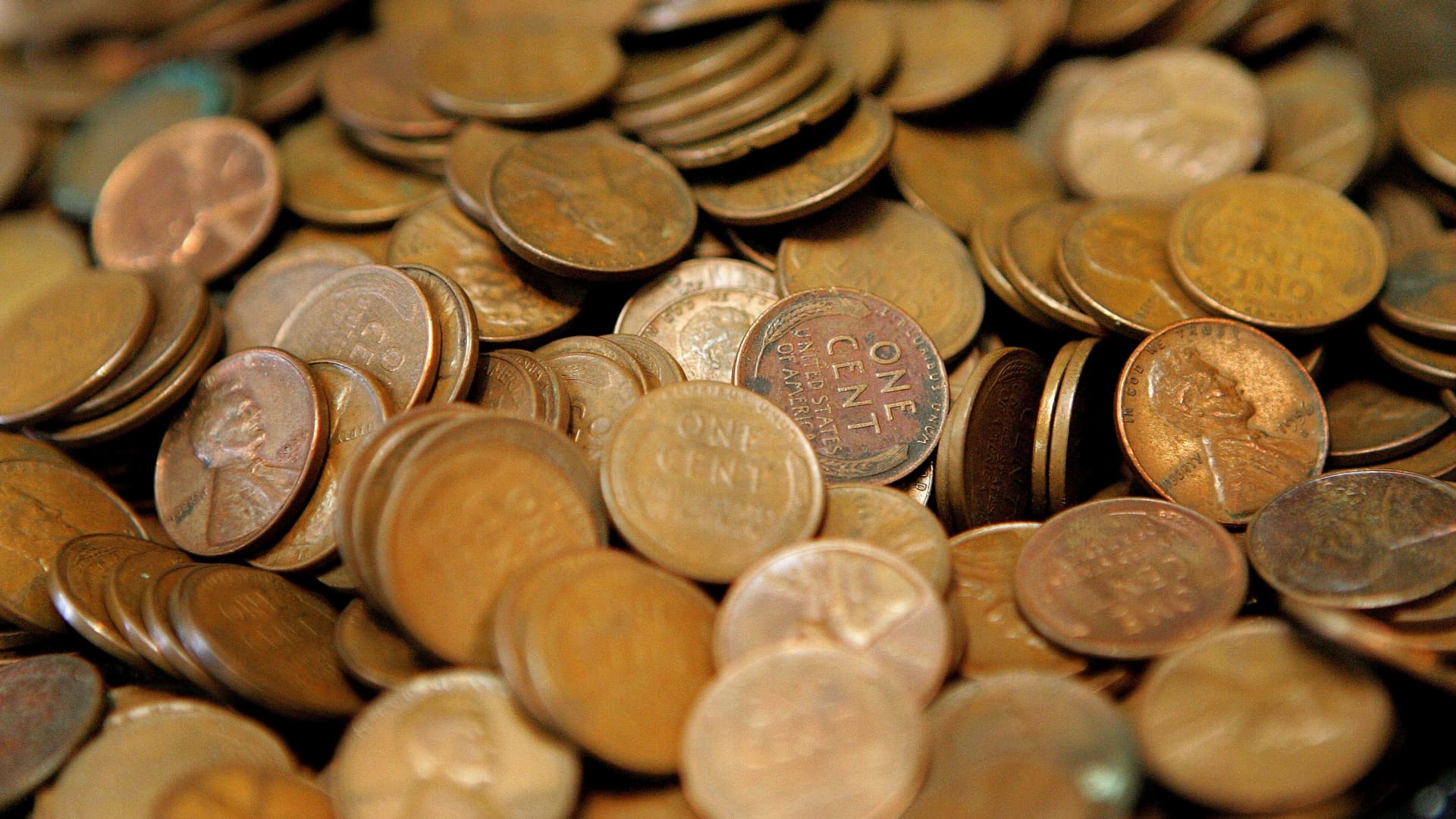Talk to end the penny’s production has been bandied about for decades among government officials and economists. However, the talk became policy when, over the weekend, President Donald Trump ordered the Treasury to stop minting new pennies.
“For far too long the United States has minted pennies which literally cost us more than 2 cents. This is so wasteful!” Trump wrote in a post Sunday night on his Truth Social site. “I have instructed my Secretary of the US Treasury to stop producing new pennies.”
Trump’s attack on the penny came after Elon Musk’s DOGE already had targeted the coin for elimination. Among all the contentious battles that the Trump administration and Musk find themselves in over government spending, this is one that most economists and others in the monetary ecosystem seem nonplussed about.
According to the Federal Reserve, there are 114 billion pennies in circulation, or $1.14 billion, or 0.006% of the money in circulation. It costs $192 million a year to produce pennies, about 4% of the Mint’s operating budget but only 0.00003% of the U.S. federal budget. This expense makes the penny expendable, according to economists.
David Gulley, an economics professor at Bentley University, said the estimated cost of making a penny, at around three cents, is an economic burden, “because millions vanish under couch cushions each year, the U.S. Mint must produce a steady stream of replacements.”
Rounding up prices
But banishing the penny could alter the prices of many small-ticket goods.
“Prices would have to be rounded to the nearest five cents to allow for cash payments and correct change received back — that will be the end of $6.99 fast food combo meals,” Gulley said, adding that it’s not clear if businesses would tend to round up or down.
That pricing decision does matter, with some citing the penny’s impact on inflation, but even that appears minimal.
“Businesses might round up more often than down, leading to a slight inflationary effect,” said David Smith, an economics professor at Pepperdine University’s Graziadio Business School. But he added that studies have shown that rounding prices to the nearest nickel does not lead to significant inflation.
In Canada, which eliminated the penny in 2013, cash transactions were rounded to the nearest five cents, based on the total amount of the transaction, not on each individual item.
To the extent rounding up occurs more frequently than rounding down, cash consumers would be paying the price for the cost efficiency Trump and Musk are seeking, said Ajay Patel, a professor of finance at Wake Forest University School of Business.
Canada’s experience in eliminating the penny shows there are some additional costs for consumers to bear. A 2017 paper by Canadian economist Christina Cheung found that penny-rounding in grocery transactions imposed a “rounding tax” of approximately $3.27 million, from Canadian consumers to grocery vendors. For a typical grocery store, though, this amounted to an estimated additional revenue of $157, indicating a minimal impact on individual consumers.
America’s remaining cash consumers get hit
Patel points out that eliminating the penny would only eliminate the penny itself, not necessarily something that costs $5.16. “Anyone writing a check or using a debit card or credit card could have the correct amount paid since no actual cash changes hands, and pennies would not have to be paid by the buyer or returned by the seller,” he said.
There are still people who use cash for many payments, and these consumers would be the most impacted, but the effect would be modest, according to Gulley, as more payments move away from physical currency. As recently as 2015, one-third of transactions in the U.S. were by cash, but that has now fallen to under 20%, and it is expected to continue on the decline.
But that means people at the bottom of the economic ladder will probably feel any penny pinch the most.
“The individuals paying for this benefit will be those who purchase products and services using cash and will continue to do so going forward because they are either unbanked or unable to access debit or credit cards or a digital wallet,” Patel said.
Gates Little, the CEO of Alabama-based Southern Bank, said the financial services sector won’t miss the pennies.
“Eliminating the U.S. penny wouldn’t make any difference in the economy,” Little said. “I can’t think of how it could hurt.”
Patel noted that President Trump only ordered the cessation of minting new pennies, not their purge from use in the currency system. So people can continue using pennies until they are slowly reabsorbed into the banking system and are eventually melted down to recycle their zinc and copper. Patel says the actual elimination of the penny is decades into the future.
Your saved penny may increase in value
Still, Little said, the gazillion pennies hoarded in piggy banks, sock drawers, and hiding under your car seats would gradually increase in value.
“Pennies would become more scarce over time and eventually increase in value. In the near term, they might become useless, depending on how the Treasury treats them. I would think that would have to be in phases so people could convert them to other denominations, thus removing them from the system,” Little said.
There are pockets of population around the country where both of these outcomes matter. Laura Maike, of Burton, Ohio, notes that the Amish will feel the pinch right now.
“Here in Northeast Ohio’s Amish country, we still use pennies regularly,” Maike said of her area, which includes thousands of generally cash-using Amish. “How would this work for cash-only transactions? It would be impossible to give exact change as the purchaser or seller.”
Maike is more bullish, though, on a world in which the end of the penny means existing pennies increase in value.
“I have a wheat penny sitting in my jewelry box because I knew when I found it nearly 20 years ago that they were becoming increasingly harder to find,” Maike said.
Pennies depicting two sheaves of wheat were discontinued in favor of today’s Lincoln versions in 1958.
Smith said there are other benefits to getting rid of the heavy-to-transport pennies.
“Eliminating the penny would save taxpayers millions of dollars each year. In addition, the production of pennies has environmental costs, including the mining of zinc and copper, eliminating the penny could have a positive environmental impact,” he said.
Some Americans are reacting to the end of the penny with a sense of humor. “How will people give their two cents?” said Eileen Kailholz, a retiree in Bright, Indiana.
But it’s not entirely a joking matter. Nate Throckmorton, an associate professor of economics at William & Mary, says it may be time to start keeping an eye on another coin in your piggy bank: the nickel.
“It’s the nickel we should worry about,” Throckmorton said.
It takes three cents to make a penny, but 11 cents to make a nickel.



